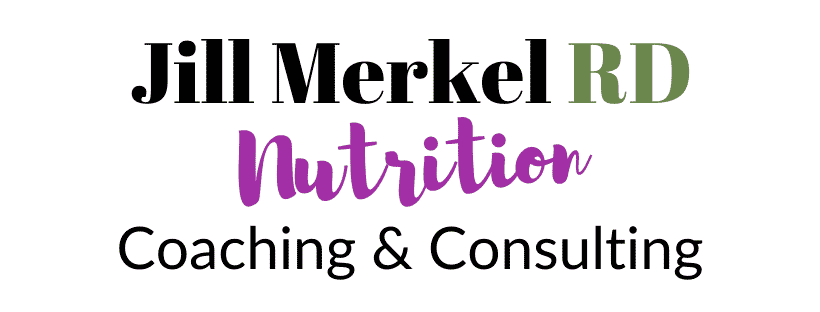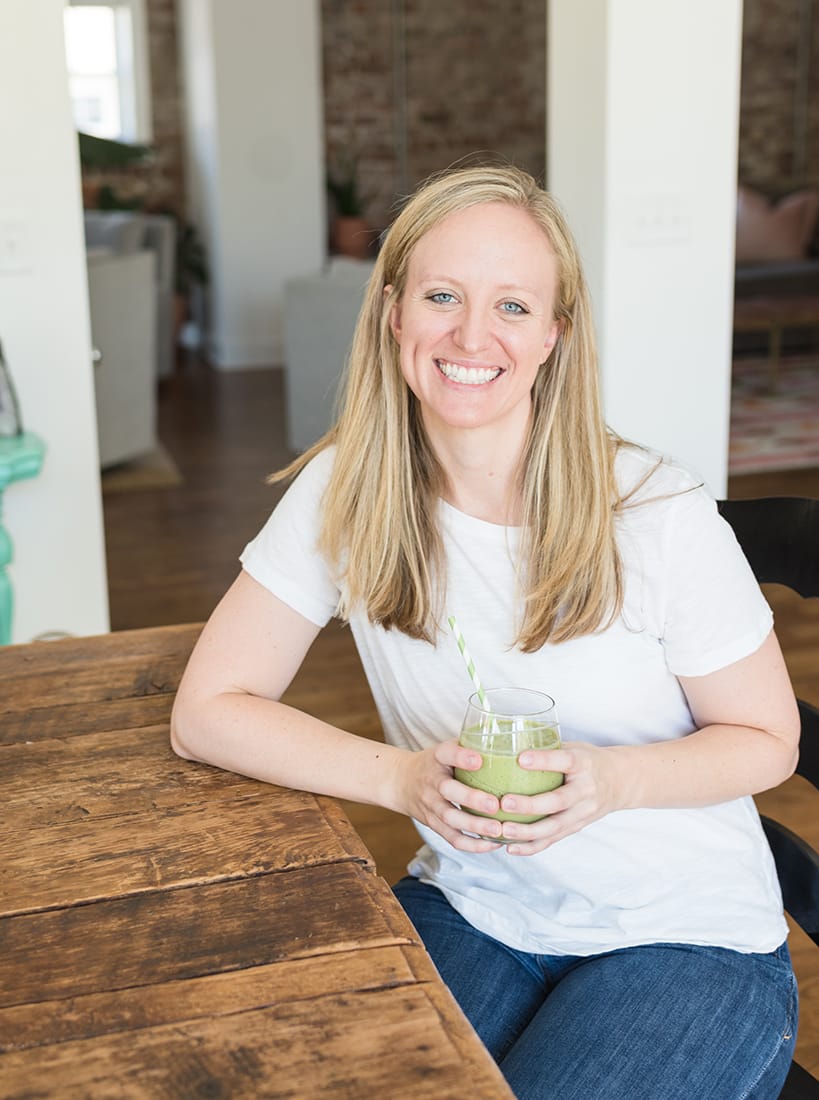It is very common that when someone goes on a diet or restricts their dietary intake in some way, they eventually overeat or binge. This is often called the restrict binge cycle.
This post is going to outline what the restrict binge cycle is, what causes it, and 5 steps to break the cycle for good!
What the Binge Restrict Cycle Is
The binge restrict cycle is sometimes referred to as deprivation backlash or rebound eating. It is what happens when the body doesn’t get enough of something – total calories/energy, carbohydrates, fat, etc.
The binge restrict cycle starts out with restriction or telling yourself not to eat X food. You may be able to avoid it for a while – a few hours, days, maybe even longer. Eventually the cravings are so strong you “give in” and end up eating more than feels good or you feel out of control.
This is often because of the psychological deprivation effects – the mentality that this is the LAST time. This is the last time you will ever eat this food again so you better eat it ALL because you will NEVER have it again. Cue the GUILT and SHAME!
And the cycle goes on and on.

What Causes the Binge Restrict Cycle
As the name alludes to, the binge restrict cycle is a self-fulfilling prophecy. Restriction, deprivation, or dieting leads to overeating or bingeing, which often leads to feelings of guilt and shame, which leads one to believe they need to go back to restriction, deprivation, or dieting. And the cycle goes round and round.
The initial trigger that starts the binge restrict cycle is often a desire to lose weight or change one’s body shape or size in some way. This is because we live in a thin-obsessed, diet culture society that worships thin bodies and praises disordered eating behaviors.
Ironically, just thinking about going on a diet can create this desire or drive to eat.
Many times people will overeat before starting a diet. For some, this pre-diet ritual of eating ALL the foods may even be part of the appeal of dieting – it’s giving yourself “permission” to eat your favorite foods before beginning your next diet.
This may reinforce the idea that you need to diet because you are out of control around these foods. But really it’s the deprivation mindset that is leading you to feel out of control. The threat of deprivation is so powerful that it can lead us to those compulsive behaviors even if you’re not physically hungry.
Why Restriction Leads to Binge Eating
Restriction (dieting) affects your metabolism. When there is not enough food coming in, the metabolism slows down to conserve energy, the appetite increases and there are often increased cravings, particularly for high carb and high fat foods. One’s desire for movement decreases.
This is a human survival mechanism. This is your body doing its job keeping you alive. Therefore, the harder you try to restrict food, the more your body and mind adapt for survival.
The more you deny yourself certain foods, the stronger and more intense your cravings become. Cravings are a natural reaction that is triggered by deprivation. {Just think about when you are “dying” of thirst and how you can’t wait to gulp down some ice cold water}.
The body also get smarter with each dieting attempt. It catches on to what’s happening and therefore the cravings get stronger with each diet and builds more momentum as the deprivation deepens. This is the body’s protective mechanisms kicking in to help avoid malnourishment.
5 Steps to Break the Binge Restrict Cycle for Good
So what do you do to break the cycle for good?!
First, most people think that the overeating or bingeing is the “problem” and the thing that needs to be “fixed.” Unfortunately, this often leads to further deprivation and restriction, which further perpetuates the binge restrict cycle.
What actually needs to be addressed is the restriction.
The restriction is what leads to the intense cravings, which leads to the overeating or binge eating.
Breaking the binge restrict cycle is not easy and can look differently for everyone.
Here are 5 steps to break the cycle for good.
- Assess what food(s) you are restricting, both physically and mentally.
- Make a list of the restricted foods. If some elicit stronger feelings of fear or anxiety, rank the foods from highest to lowest.
- Choose one food from the list to begin experimenting with. This can be a lower fear/anxiety food from your list.
- Set yourself up for success. Seek out a trusted friend or family member or a trained health professional if you need support during this process. Go out and get the food you have identified and bring it home. Make sure you are not overly hungry or in an extreme mood state for this experiment. Sit somewhere comfortable with the food item and notice how you feel. What thoughts, emotions, feelings, physical sensations come up for you? You may want to journal what you are thinking and feeling. Take a bite of the food and notice again what thoughts, emotions, feelings, physical sensations come up for you. Continue this process until you begin to notice fullness or satisfaction cues in your body. Maybe the food doesn’t taste as good or isn’t as appealing. Maybe your stomach starts to feel full. Once you have stopped eating, again journal or think through what you are feeling. Note what the experiment was like for you. Has your fear or anxiety gone down at all since the beginning of the experiment?
- Continue working through your list of restricted foods. Go at your own pace. It can be one food at a time. It can be in your home or out somewhere. It can be alone or with a trusted support person or trained healthcare professional.
Please note that this process takes time. It takes practice, patience, and lots of self-compassion. This is where working with a trained healthcare professional such as a therapist or dietitian can be helpful.
The overall goal of the experiment is to make peace with food. To provide evidence to yourself that your worst fears did not come true when you ate X food.
This process also requires action. This is something you have to do and experience. It is not something you can only think through.
You may also want to begin assessing and getting curious about where these food rules and fears around food(s) came from. And note, are they serving you? What might it be like to let go of just one food rule?
For More Intuitive Eating Resources
Download my FREE Guide – 5 Steps to Stop Obsessing About Food and Your Body
Individual Nutrition Coaching – if you’re looking for more individualized support, check out my options for working together one on one.
Intuitive Eating Support Group for Women – if you’re interested in learning more about Intuitive Eating in a supportive, small group environment, this is the group for you!

